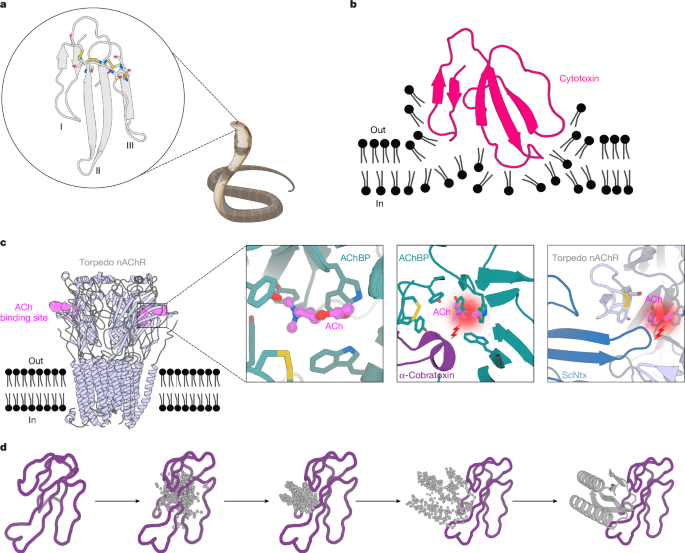WWW.DIGITALTRENDS.COM
TP-Link routers may get banned. Heres what brands to use instead
Table of ContentsTable of ContentsWhats going on with TP-Link?Other router brands to try outHow to stay safe if youre currently using TP-LinkIn December last year, it was revealed that the U.S. government is considering banning TP-Link routers entirely. Much like Huawei back in 2019, the brand might soon all but vanish from the U.S. market but unlike Huawei, this might turn out to be a huge problem, because TP-Link routers are highly popular all across the country.The fate of these routers is still uncertain, but its a good idea to think ahead and potentially replace your existing router. If youre buying a new one, it might be better to buy from a different brand. Below, Ill walk you through the best routers currently out there and help you pick a brand that suits you.Recommended VideosTP-LinkTP-Link is a Chinese company that specializes in making various networking products and smart home devices. Its the brand behind millions of routers and mesh Wi-Fi systems that are used in the United States every single day. One of its key advantages over many competitors is that its routers are highly affordable; even the latest Wi-Fi 7 models can be scored for as little as . However, the company has found itself on unsteady ground. The U.S. Departments of Justice, Defense, and Commerce are actively looking into TP-Link, with the Commerce Department now subpoenaing the brand. It all stems from alleged links to China-backed cyberattacks, some of which targeted key government organizations and their suppliers as well as companies with no links to the U.S. government.Its unclear whether TP-Link routers have some specific security flaws that make them more susceptible to cyberattacks than other brands. According to CNET, some security researchers claim that the possible ban might be linked more to the companys ties to China rather than hardware- or software-related flaws within its devices.Thomas Pace, the CEO of NetRise, a cybersecurity company, told CNET in December: People expect there to be some smoking gun or something in these devices from Chinese manufacturers, and what you end up finding is the exact same problems in every device. Its not like the Chinese devices are glaringly insecure. Thats not the risk. The risk is in the corporate structure of every Chinese company.With that said, the experts that CNET spoke to did agree that TP-Link had some security flaws, but it wasnt alone chances are that a router thats completely immune to hackers simply doesnt exist. Cybersecurity experts note that these attacks arent limited to any single router brand, and devices all over the world may be affected.At this point, theres no telling whether the ban will go through and what will happen if TP-Link routers are banned. However, according to The Wall Street Journal, TP-Link accounts for as many as 65% of router sales that took place in 2024 in the U.S., so many users could be affected by the ban.As its still unclear whats going to happen to TP-Link, theres no need to throw out your existing router if you already have one. But if the ban does go through, many users will be looking for replacements, and those who dont currently own a router might want to look into other brands to be extra safe.The good news is that there are a few options to choose from, although there arent many which are as affordable as TP-Link tends to be. Lets check them out.AsusAsusApart from being known to make routers that look like a cross between a Pokmon and a Transformer, Asus is responsible for some of the best routers on the market, chiefly aimed at gamers. If you want to avoid lag or disconnects during gameplay, Asus routers tend to be mighty powerful but also pretty expensive.The company offers a full range of routers, and while they come with features that gamers appreciate, they can be used at home for any purpose. Some are crazy expensive, such as the Asus RT-BE96U BE19000, priced at , but this is one overkill Wi-Fi 7 router for the most demanding users. It can offer speeds of up to 19Gbps, dual 10Gb WAN/LAN ports, multi-link connection, and 6GHz support.A cheaper option is the Asus RT-AX86U Pro, which is a dual-band Wi-Fi 6 gaming router with speeds of up to 5,700Mbps, access to 2Gbps WAN connections and a wired 2.5Gbps port, and a more modest . Being a gaming router, it also serves up some interesting features, such as Adaptive Quality of Service (QoS), which allows you to prioritize traffic toward specific games instead of other uses, such as smart home devices or browsers.Asus does have a bunch of models in the sub-$100 price bracket, but of course, theyre not as impressive as the pricier options. However, the company is widely known as one of the best alternatives to TP-Link due to its high product quality.NetgearNetgearNetgear may not be as recognizable to gamers as Asus is, but there are still loads of options to choose from and much like Asus, the company serves up routers ranging from $6o to $600.One of the more popular models is the Netgear Nighthawk RS300, which is a tri-band router with access to Wi-Fi 7, including 2.4GHz, 5GHz, and 6GHz bands. Unfortunately, it cant be used for a mesh network, but it does offer solid coverage regardless. Youll find it for .Netgears Nighthawk Tri-Band RS700S is similar to the expensive Asus I talked about previously, albeit slightly cheaper at . This model also supports Wi-Fi 7, speeds of up to 19Gbps, and a 10Gbps Ethernet port. Its a premium product for sure, and just to be clear, most of us have no use for routers of that caliber, but it is an option.On the other side of the spectrum are routers like the Netgear R6700AX, which is a Wi-Fi 6 router with speeds of up to 1,8Gbps. Netgear promises to deliver coverage of up to 1,500 sq. ft. and support for up to 20 devices at a time with this one, and itll only cost you a much more reasonable .Netgear also has some innovative options up for grabs, such as the Netgear Orbi Voice, which is a device that combines a Wi-Fi router with a smart speaker. Bonus: It looks pretty nice, too.EeroJacob Roach / Digital TrendsEero is the final brand Id like to recommend you today, and its one that strikes a good balance between affordable and solid. Being an Amazon brand, its widely available on the platform, and there are lots of kits so that you can set up your own mesh system to increase the coverage in your home.The Eero 6+ mesh system was one we particularly liked. A two-pack of Eero 6+ nodes is enough to cover a three-bedroom household, and while its not the latest option from Eero (those can cost upward of $600), its still a recent option with plenty of networking power to offer. Its a Wi-Fi 6 mesh system with speeds reaching up to 1Gbps. Assuming youre fine with a two-pack, itll cost you , and at that price, Eero claims that you can connect up to 75 devices. (My old router would break down in tears if I tried to do something like that.)Amazon also has a bunch of better Eeros available, including the Eero Max 7, which supports plans of up to 10Gbps. However, just a single one of these will cost you a whopping $600, at which point you might as well get yourself an enterprise-level router. A three-pack of those will run you $1,700 thats enough to build a decent gaming PC with.If you dont need a whole mesh system or crazy-high speeds, a single Eero 6 and still supports speeds of up to 900Mbps.TP-LinkAs I mentioned earlier on in this article, you dont have to worry about your entire network just because you own a TP-Link router. However, Microsoft has found that these routers were used in so-called password spray attacks, which means using a common password across a range of devices and hacking the ones that are using that password.We dont know about any dangers that are exclusive to TP-Link routers, but there are a few things you can do to make sure youre a little bit safer, regardless of who made your router.First of all, if youre using the default router that was given to you by your ISP, its a good idea to replace it. Not only will the new router be better, it might also be more secure. Make sure to check with your ISP first, though, as some internet providers dont allow third-party hardware.Next, no matter if you have a third-party router or one thats been rented to you, make sure to change your password to something highly secure and strictly your own. Default passwords continue getting people in trouble on a regular basis.Lastly, keep your firmware up to date and make sure that youre using some protective measures, such as a firewall and Wi-Fi encryption. Hackers are likelier to target companies and government organizations than consumers, but its better to be safe than sorry.Editors Recommendations









